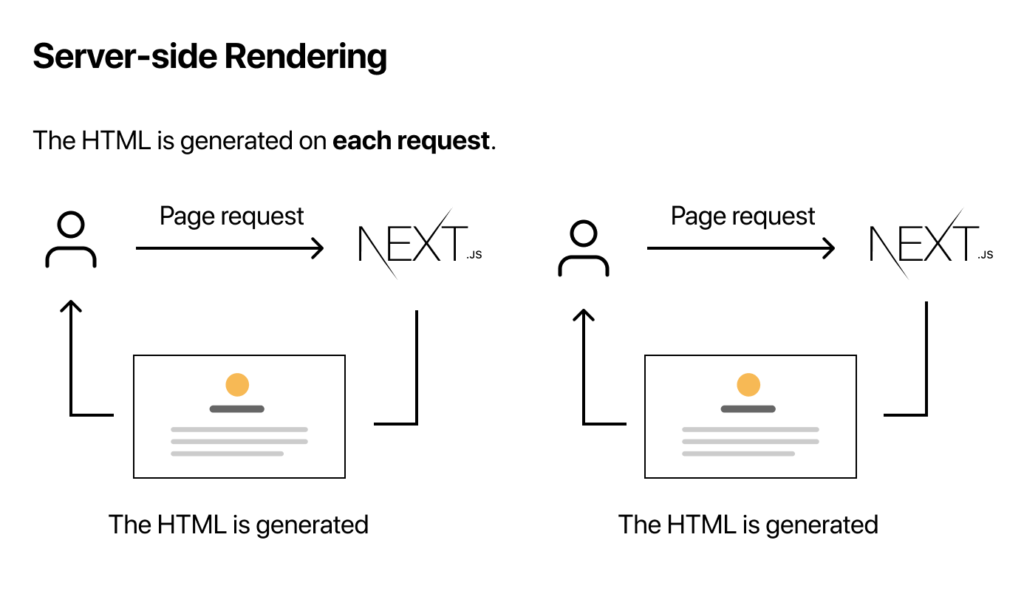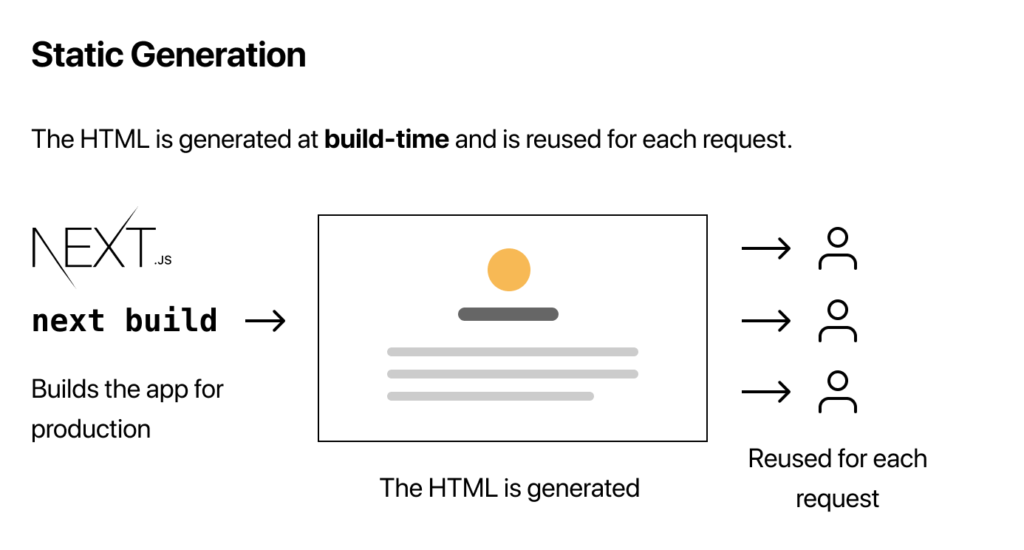When it comes to building server-rendered React applications, Next.js has become a popular choice among developers. One of the key decisions developers have to make is choosing between Static Site Generation (SSG) and Server-Side Rendering (SSR). Both have their own benefits and tradeoffs, and choosing one over the other depends on the requirements of the project.
What is SSG?
Static Site Generation (SSG) is a technique used to generate pre-built HTML and CSS files during build time, which are then served to the client. This means that the server generates the HTML and CSS once, and then the same content is served to all users, regardless of their location or device. This approach is ideal for sites that don’t need real-time updates, such as blogs, e-commerce websites, and product pages.

What is SSR?
Server-Side Rendering (SSR) is the process of generating HTML on the server and sending it to the client. This technique is used when a website requires dynamic data that is frequently updated, such as social media platforms or real-time news sites. SSR can also help improve performance by reducing the time it takes for the first page to load, as well as improving search engine optimization (SEO) by allowing search engines to crawl and index the website’s content.

Comparing SSG and SSR in Next.js
Next.js provides developers with the flexibility to choose between SSG and SSR based on their project requirements. Let’s take a look at the differences between SSG and SSR in Next.js.
Performance:
In terms of performance, SSG is typically faster than SSR because the HTML and CSS files are pre-built and ready to be served to the client. This approach eliminates the need for the server to generate HTML and CSS every time a user requests a page, resulting in faster load times and better user experience.
However, in the case of dynamic content, SSR can provide better performance than SSG. This is because the server generates the HTML on demand and sends it to the client, which means that the user can see the content without any delay.
SEO:
Both SSG and SSR are good for SEO, but SSG has an edge over SSR because the pre-built HTML and CSS files can be easily crawled and indexed by search engines, making it easier for users to find your site. SSR also allows search engines to crawl and index your site, but it requires additional configuration to ensure that the content is easily discoverable.
Development:
SSG is simpler to implement than SSR because it doesn’t require any server-side code or database connections. This means that developers can focus on building the user interface without worrying about server-side complexities. However, SSR requires developers to write server-side code, which can be challenging for those who are not familiar with it.
Conclusion:
In conclusion, both SSG and SSR have their own benefits and tradeoffs, and choosing one over the other depends on the requirements of the project. SSG is ideal for sites that don’t require real-time updates, while SSR is more suitable for sites that require dynamic content. Regardless of which approach you choose, Next.js provides developers with the flexibility to build server-rendered React applications that are fast, SEO-friendly, and easy to develop.
